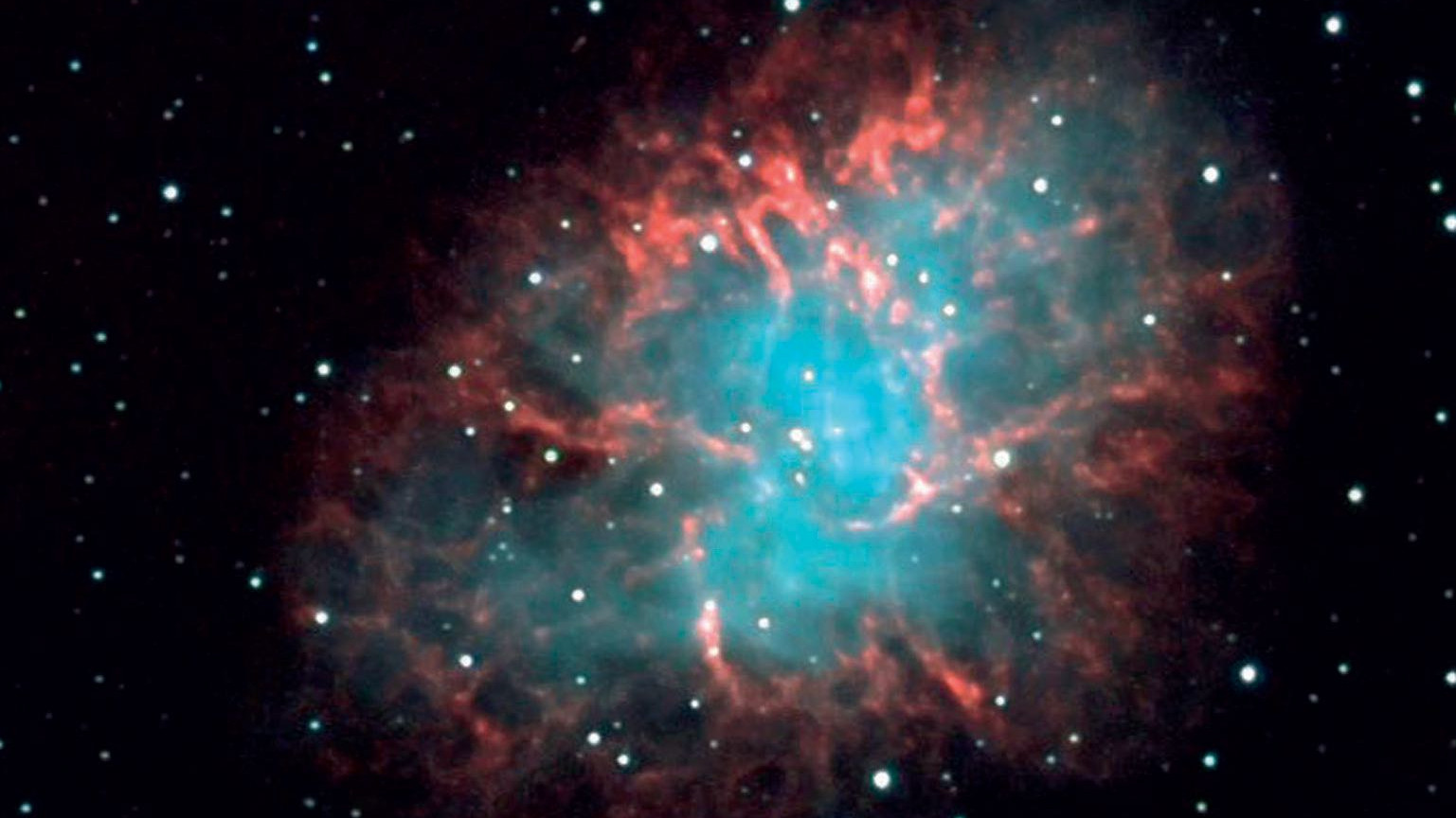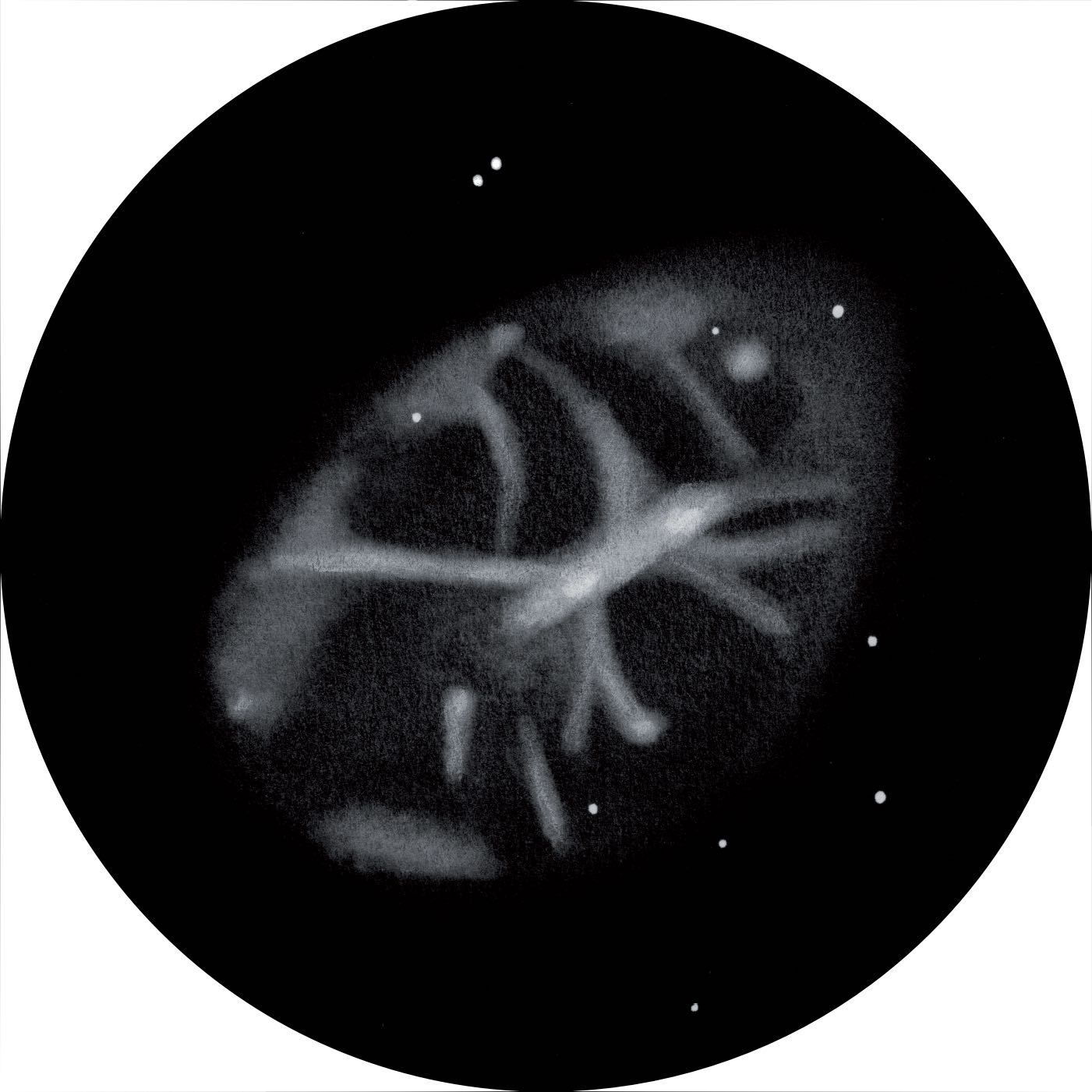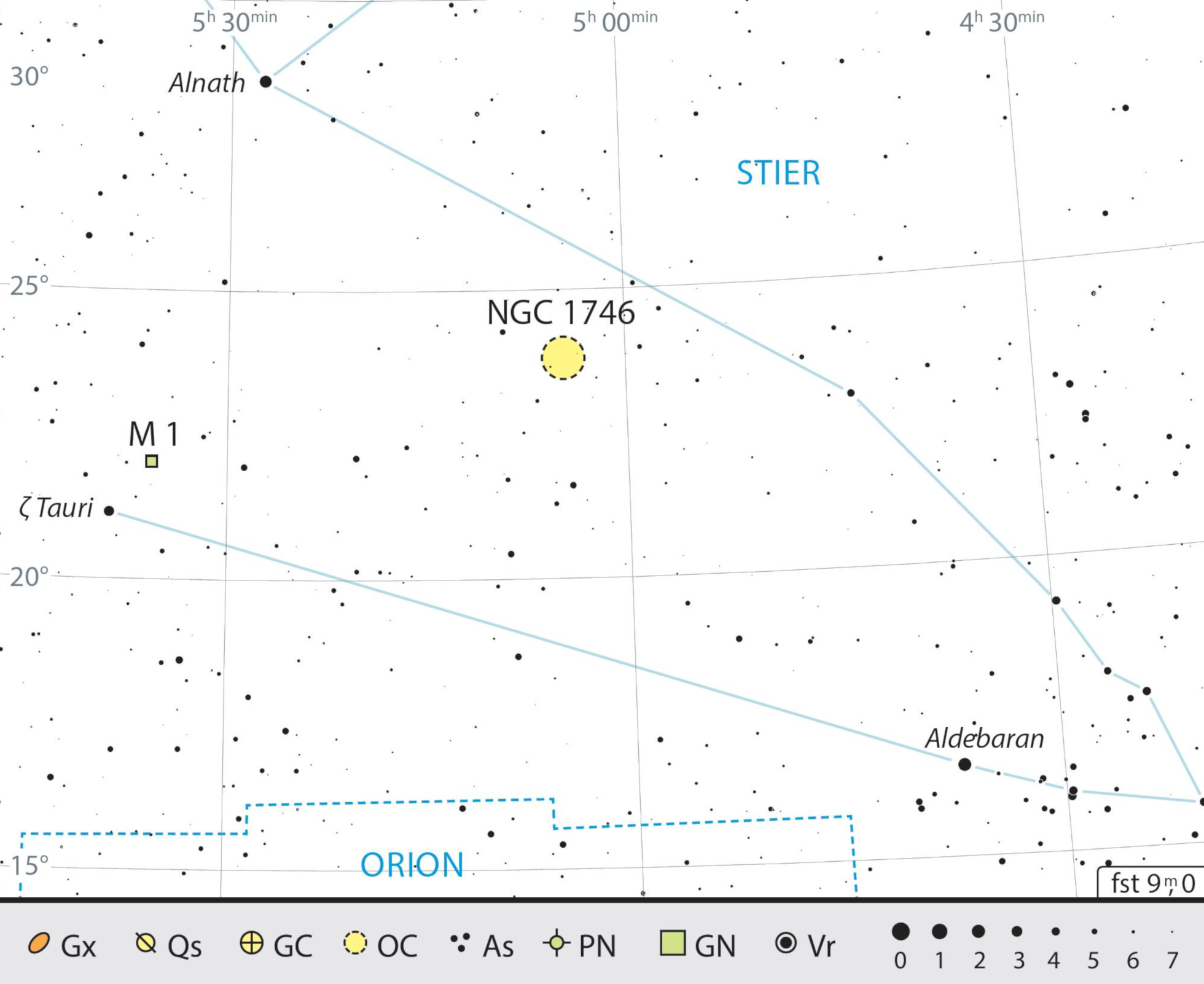Messier 1 – the famous Crab Nebula
The famous supernova remnant in the constellation of Taurus, observed by Chinese astronomers in July 1054, is the most awesome of all the deep sky objects.
 The Crab Nebula in the constellation of Taurus.
Michael Breite, Stefan Heutz, Wolfgang Ries/ CCD Guide
The Crab Nebula in the constellation of Taurus.
Michael Breite, Stefan Heutz, Wolfgang Ries/ CCD GuideMessier 1 is the first object listed in Charles Messier's Nebula catalogue and is around 6,300 light years away from us. This is the most famous and brightest remnant of a supernova explosion, unique among all 110 Messier objects.
Observations in China
 Drawing of Messier 1 as seen through a 27" Newton telescope
at 366 times magnification and with a OIII filter. Uwe Glahn
Drawing of Messier 1 as seen through a 27" Newton telescope
at 366 times magnification and with a OIII filter. Uwe GlahnChinese astronomers reported that a new star appeared in the constellation of Taurus on 4 July 1054, and was said to have been visible in the night sky with the naked eye for two years. Without knowing it, the astronomers at the time were witnessing the explosive end of a massive star. For a month at its peak luminosity, this so-called supernova was visible even in the daytime. Today, it is assumed that the Crab Nebula originated from this supernova explosion. The nebula was discovered by John Bevis in 1731 and, independently, by Charles Messier who recorded it as the first object in his nebula catalogue.
Messier 1 stands high in the south in the constellation of Taurus during the winter months. To find it, pan 1.2° in a north-westerly direction from the star ζ Tauri. Under dark country skies, the nebula can already be seen with 10×50 binoculars as a small, matt fleck. In a 80-mm to 150-mm telescope with a magnification of 60 to 90 times, it appears as an oval, small nebulaous fleck. Using a telescope with an aperture of 200 mm or more, an indentation can be observed on the eastern side.
Nebula filaments
The nebula’s filament-like structures can only be perceived with 300-mm telescopes or larger. Narrowband or OIII filters add contrast and make the nebula appear brighter and larger. The nebula filaments also appear more detailed, as their light has an emission spectrum that nebula filters allow to pass through.
A pulsar is located at the centre of the nebula, which generates strong magnetic fields in the surrounding area. This neutron star is only about 10 kilometres in diameter and rotates 30 times per second. However,you would need a very large telescope of 600 mm or more to observe it, together with a very dark country sky.
If you look at photographs of Messier 1 today, you may wonder where the crab shape is, that gave the nebula its famous name. The name goes back to the first drawing of the nebula, which was made by the Irish astronomer Lord Rosse in 1844. With a little imagination, you can actually make out the shape of a crab.
 Finding chart of Messier 1 in the constellation of Taurus. J. Scholten
Finding chart of Messier 1 in the constellation of Taurus. J. ScholtenAuthor: Michael Feiler / Licence: Oculum-Verlag GmbH
